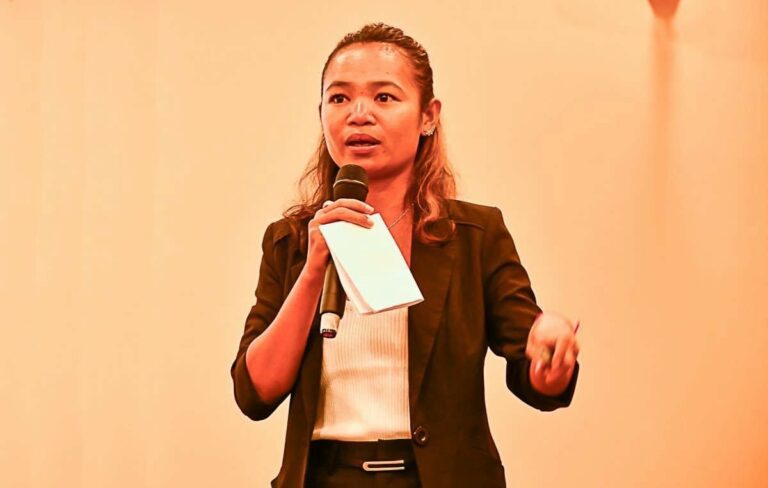Under the new slogan “Be enchanted” Myanmar is promoting itself as one of the 10 countries of ASEAN to attract more tourists to come. Overall international arrivals has recently stagnated, but with a rise of Asian visitors making up for the falling Western demand. According to the Ministry of Tourism and Tourism, the latest figures of tourist arrivals will be released during the upcoming ASEAN Tourism Forum during 12-16 January 2020 at Bandar Seri Begawan in Brunei.
Most tourists arrive in Myanmar by air at Yangon International Airport, Mandalay International Airport and Nay Pyi Taw International Airport, if not using border crossings via Thailand, Laos, China, India and Bangla Desh or arriving by cruise ships. Originally called the “Golden Land” the Republic of the Union of Myanmar has now more than 52 million inhabitants with some 135 ethnic groups. The Myanma people are in the majority, while Theravada-Buddhism is the main religion, but at the crossroads between China and India there are also Chinese, Hindus, Moslems and Christians. Actually, Myanmar is more than a trip and offers rivers, mountains, open plains, islands and long-stretched beaches. The cultural experience is overwhelming with a wealth of pagodas and Buddha images to see wherever you go, while people are smiling whenever you will meet them. “Mingalaba” is the magic word that you can use under most circumstances.
Yangon is still the most important commercial capital and is home to the glorious Shwedagon Pagoda, which goes back to the time of the Buddha. The town has tree-lined streets, busy markets, recreational parks and two artificial lakes, which are combined with the hustle and bustle of “downtown” colonial heritage sites. From the Central Railway Station tourists can take a circular train ride, or visit outlying towns like Thanlyin, Bago and Twante.
Mandalay was the last royal city of Myanmar before the country was colonized by the British in 1885 and is the real heart of the country boasting the former royal palace, beautiful teak monasteries and spectacular pagodas. Arts and handicrafts like bronze casting, stone and wood carving, tapestry making and silk weaving among others can be studied in the most famous Arakan Pagoda and nearby Amarapura, Innwa, and Sagaing. Excursions can be arranged to Mingun and Pyin-U-Lwin.
Bagan was the first royal city of the Myanma people and is located at the east side of the mighty Ayeyarwadi River offering scenic sites and a myriad of temples and pagodas in all shapes and sizes. The setting of the old town is astonishing and there is the possibility to hop on a hot air balloon ride. The most important sites are the Shwezigon, Ananda, Thatbyinnyu, Dhammayangyi, Sulamani, Lawkananda and many others. Bagan is also famous for its lacquer ware industry and many surrounding villages are specialized on basket weaving, pottery and traditional food products. Excursions can be arranged to the Popa spirit mountain and the town of Salay downriver. A boat ride upriver goes to the cave temple of Kyaukku-Umin, which leads you to the end of some of the meditation cells hewn into the sandstone cliff.
Still in the central part of the country there are the so-called Pyu ancient cities, which thrived for over 1,000 years between 200B.C. and 900A.C. so that UNESCO has already recognized them as world heritage sites followed by Bagan only recently. There are three cities, namely Halin, Beikthano and Sri Kshetra. Little of the old cities remain today but the existing monuments are of significant historical importance.
Nay Pyi Taw is the new administrative and political capital of Myanmar since 2006. Strategically built in the center of the union it is free from traffic unlike Yangon and boasts around 50 luxury hotels to make it the convenient MICE (Meetings, Incentives, Conferences & Exhibitions) destination of the country. A prominent attraction is its dominating Uppatasanti Pagoda, which is a hollow replica of the Yangon’s Shwedagon and has some auspicious white elephants housed at the foot on the east side of the pagoda. Other attractions are the enormous Parliament House and City Hall, National Museum, Gems Museum, National Landmarks Garden, Zoological Garden, and golf courses.
Besides the centrally located Myanma regions, there are the outlying 7 union states to visit such as Shan State with its scenic Inlay Lake, Kachin State with the highest mountain Hkakaborazi (5,882m), Chin State in the western part of the country along the Indian border, Rakhain State with its premier Ngapali Beach at the Bay of Bengal, Mon State with its Golden Rock sanctuary, and Kayin State with craggy Mount Zwekabin. Kayah State is worth a visit to discover tribal villages and the Kayan women wearing brass rings around their neck. Not to forget the outlying Myanma regions of Ayeyarwadi with its Chauntha and Ngwe Saung beaches and Tanintharyi with its coastal Dawei, Myeik and Kawthaung cities at the Andaman Sea.
It will be difficult to go to all these recommended places at the same time during one journey so that there are many reasons to come back for some other time and help Myanmar to become one of the most exotic and preferable countries to visit in the future.
For further information, please contact by e-mail hohlerreinhard@gmail.com





